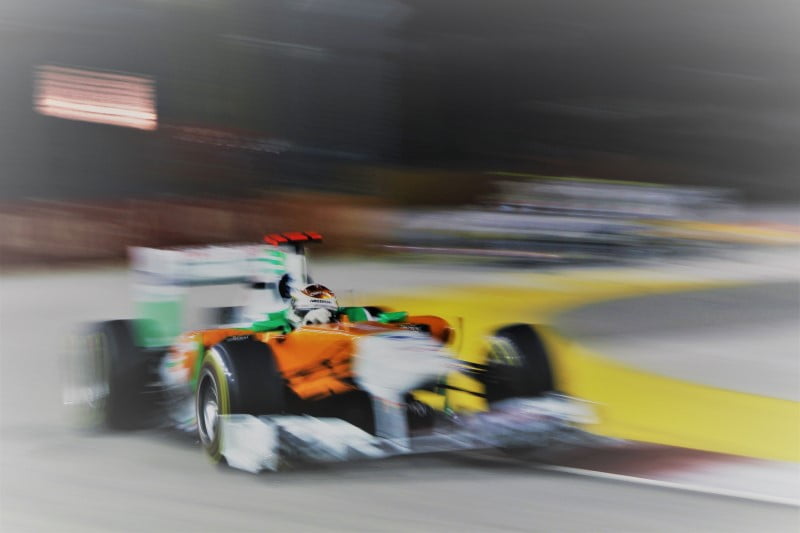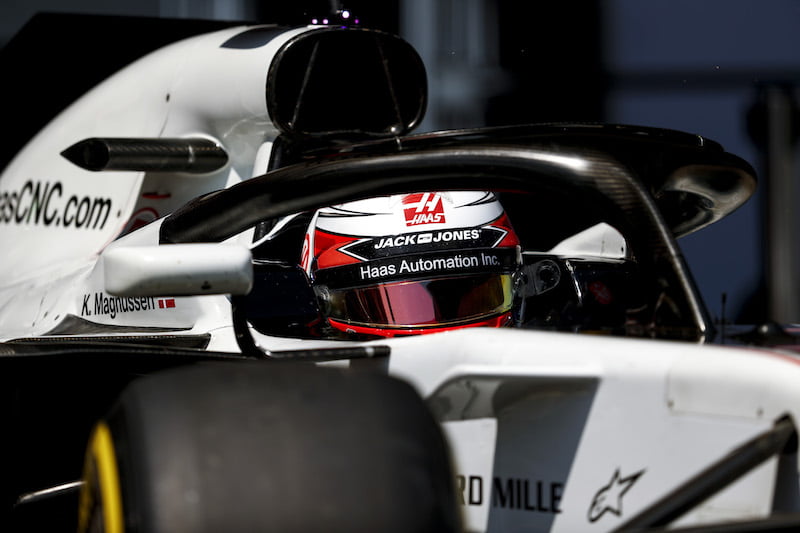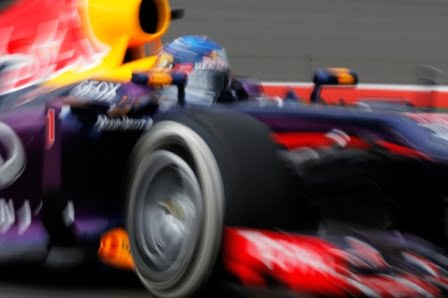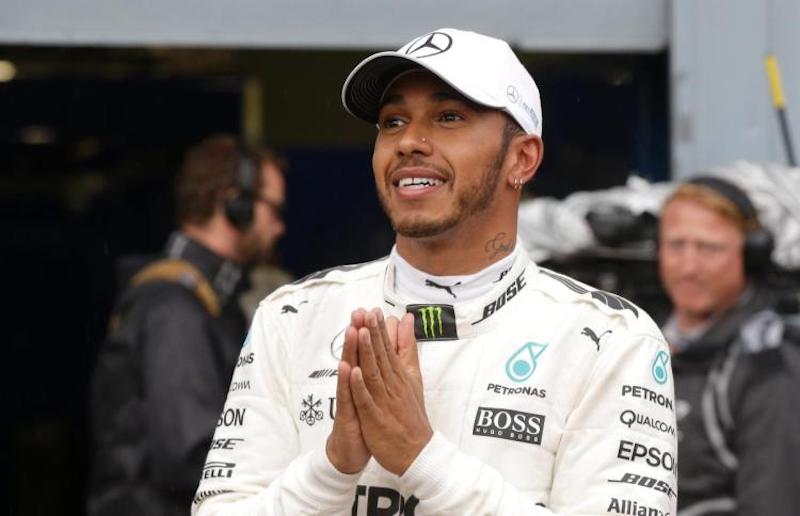As most readers know, I managed various responsibilities at Force India from 2010-15. Here is an account of some of my best memories and heartbreak moments.
For every Formula 1 fan in India, the birth of Force India in 2008 was a dream come true – a team that not only was Indian in name, with the tricolour printed across their cars, but also Indian in spirit – and for the first time in the history of the sport, the prospect of the Indian tricolour waving and the national anthem playing on the podium for an Indian constructor became a possibility.
As all good stories, this one too has an end – some might argue that the team actually outlived its expected lifecycle in the sport with many years of graceful results, several podiums and decisive “best of the rest” championship finishes. In a grid full of Goliaths (constructors with infinitely deep pockets and years of experience) Force India was a minnow who not only took on the big boys but came out on top often enough, winning respect and love along the way. I had the opportunity to work at Force India from 2010-2015 for six seasons (or 100+ races, in F1 terms) – each of which was incredibly special.
The ‘Force India F1 Team’ name is set to disappear from Formula 1 in 2019. Force India, currently being called Racing Point, will undergo a further name change before the start of the 2019 Formula 1 season next year. But this was to be expected, after all, Lawrence Stroll didn’t buy the emotion and sentiment behind ‘Force India’, he bought its racing business earlier this year in August.
Understandably, Indian Formula 1 fans are disappointed, but I believe it is time to celebrate the successful decade (2008-2018) Force India had in the world of Formula 1. Here are some highlights of the team, on and off track.
The birth of the team: February, 2008
Vijay Mallya launched the VJM01, Force India’s first-ever Formula 1 car, amidst a lot of fanfare at the iconic Gateway of India in Mumbai. Till date, this is possibly the grandest sports launch witnessed in the Indian industry. The launch generated much-required buzz for the team in a country where racing is limited to a nice target audience. Incidentally, my co-writer, Mithila Mehta was present at the launch event as a journalist (and a fan). I remember asking myself: Has Vijay Mallya bought the team to publicise his brands globally? Can he actually help resurrect the team and avoid them the blushes season after season? After all, the team he bought was arguably the slowest on the grid.
The 2008 Formula 1 season concluded with Force India scoring no points. In fact, the team had more retirements than race finishes. Fans would remember Kimi Raikkonen’s crash with Adrian Sutil in Monaco – one that took the Force India driver out of contention from a hopeful 4th place finish. However, 2008 laid the foundation of the team that eventually went on to beat the bigger and more established teams in the time to come. There was a management restructure, but above all else, Mallya forged a partnership a technical partnership with McLaren for engines (Mercedes) and gearboxes – one that eventually converted to a full-blown technical partnership with Mercedes for their engines, gearboxes, etc. in 2014 and still continues.
Best ever race: 2009 Belgium Grand Prix
Statistics say that this race was by far the best for Force India – the team’s only pole position and a second place finish (courtesy: Giancarlo Fisichella). In fact, the team is yet to equal such a record at any Grand Prix event, despite having several successful races. I recollect how miniature replica trophies were distributed among the factory staff following Fisichella’s podium feat. At the following race in Italy, Adrian Sutil scored a fine 4th place and scored the team’s first-ever ‘fastest lap of the race’, offering Indian fans much hope for 2010.
Ecclestone Check-mated The Indian GP?
Best of the rest, consistently so
From 2011-till date, there have been several races worth celebrating. Di Resta’s 4th place in Singapore (2012), Sutil’s multiple overtakes on World Champion drivers like Alonso in Monaco (2013) to finish 5th, 9 double points finishes in 2014, the 5th place finish in the Constructors’ Championship in 2015 to finishing ‘best of the rest’ (an unofficial term reserved for the team finishing 4th) two years in a row in 2016 & 2017. And since we are on unofficial titles, Force India has almost always been labelled as the ‘best bang for buck World Champions’ for the past several seasons.
Most successful driver: Sergio ‘Podium’ Perez
Sergio Perez has been Force India’s most successful driver; the Mexican scored 5 out of the team’s 6 podium finishes in the 5 seasons he has raced with them. Bahrain (2014), Russia (2015), Monaco (2016) and Baku (2016 & 2018) have been his happy hunting grounds. In fact, along with Spa, the street circuit of Baku is known to be one of those that favoured the team the most. Perez has been the team’s star member, on and off track. Along with his talent, the Mexican has been successfully able to attract sponsorships from his home country. In fact, before the Strolls swooped in to buy Force India, it was Perez’s decision to take the team to the administration that stopped the team from shutting down completely.
Heartbreak Moments
Nico Hulkenberg’s clash with Lewis Hamilton while leading the 2012 Brazilian Grand Prix, the team’s first double-DNF in two years at the 2013 Malaysian Grand Prix, Paul Di Resta’s disqualification from qualifying due to being underweight (2013 British Grand Prix) and of course, the several times in the last couple of seasons when Sergio Perez and Esteban Ocon clashed with each other (Spa, 2017; Singapore, 2018) costing team valuable points.
Racing At Home
The Indian Grands Prix were definitely memorable for the team – more for off-track than on-track reasons. From the three races held, the team scored double points finish only the last edition (2013). From a business point of view, it was a few weeks before the inaugural Grand Prix in 2011 when Sahara was announced as the team’s co-owner with a $100 million investment to purchase a 42.5 percent stake in the company. I witnessed the deal up-close and had the opportunity to service it as two of India’s then largest sports investors came together to take Force India to take the next level – this includes the long-awaited plans to open a new factory, one that the Strolls might finally make happen.
The team also used the annual appearance of the Indian Grand Prix to run on-ground activations in an effort to mobilise more Indian fans. In my view, Force India and the team’s sponsors did more to promote the Indian Grand Prix that the promoters themselves. I recollect how the ‘Force India Pit-Stop Challenge’ – one where fans got the opportunity to conduct a pit-stop on an actual Formula 1 car, was a star attraction at several college festivals across the country. At the 2013 Indian Grand Prix, the team commemorated Sachin Tendulkar’s cricketing career by running the words ‘#MasterBlaster’ on their cars. Tendulkar was due to retire later in the year and had often expressed support for Force India for patriotic reasons.
One From A Billion Hunt
Finally, Vijay Mallya’s dream to see an Indian Formula 1 driver in Force India saw him announce the ambitious ‘One from a Billion Program’. This program was targeted towards school students and offered them a chance to try their hand at go-karts at no cost. India’s Formula 1 hopefuls (Arjun Maini and Jehan Daruvala) were finds of this program, one that I had the opportunity to lead under the guidance of Ravikant Sabnavis and Bob Fernley; the latter was recently appointed by Mclaren to lead Fernando Alonso’s 2019 Indy 500 bid. For the Indian Motorsport industry, Force India’s talent hunt program was possibly the biggest in terms of reach and opportunity. When Maini and Daruvala make it to Formula 1, a bit of credit should go Force India’s way given their early guidance and support.
During my tenure at Force India and despite Mallya’s business problems, I never imagined that the team’s end would be this abrupt – Indian fans were even denied a last race to celebrate the team’s achievements. However, here’s hoping the Jordan-Midland-Spyker-Force India legacy continues as Racing Point or whatever it is called next year. As a send-off, it would be apt to share what the team’s Sporting Director Andy Stevenson told me when I met him at the Belgian Grand Prix in Spa earlier this year – it is the same story every 10-12 years (with regards to a new buyer). The team may be no more in its original avatar, but the legend of Force India will live on.
This post was first published on Firstpost.














